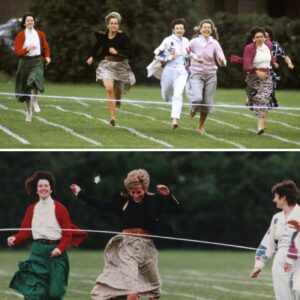Exploring the height of MJ’s stardom and “Black or White” with Wesley Morris
/cdn.vox-cdn.com/uploads/chorus_image/image/73118486/jacksonblackwhite_getty_ringer.0.jpg)
Getty Images/Ringer illustration
60 Songs That Explain the ’90s is back for its final stretch run (and a brand-new book!). Join The Ringer’s Rob Harvilla as he treks through the soundtrack of his youth, one song (and embarrassing anecdote) at a time. Follow and listen for free on Spotify. In Episode 116 of 60 Songs That Explain the ’90s—yep, you read that right—we’re covering Michael Jackson’s “Black or White.” Read an excerpt below.
So Michael Jackson’s Thriller comes out in 1982 and sells a reported 70 million copies worldwide and reigns, to this day, as the best-selling album of all time. (Globally. It’s the second-best-selling album of all time in America. The Eagles! The fuckin’ Eagles.) Next, in 1987, Michael puts out Bad, which is the 12th-best-selling album of all time globally, with 35 million reported copies sold worldwide, making it slightly more successful than Alanis Morrisette’s Jagged Little Pill and slightly less successful than Led Zeppelin IV. Then in 1991 comes Dangerous, which is the 30th-best-selling album of all time globally, selling roughly 30 million reported copies and sandwiched by the fuckin’ Beatles. Dangerous is just ahead of Abbey Road and just behind Sgt. Pepper’s Lonely Hearts Club Band. We are trending downward, in terms of pure sales, from Thriller to Bad to Dangerous, but Michael Jackson is nonetheless still on a monster blockbuster run the likes of which pop music had never seen before and (no offense to Taylor Swift or whoever) we will never see again. People do not sell albums like Michael Jackson anymore. The absolute biggest pop stars now are hailed as gods if they sell, like, one-tenth as many albums as peak Michael Jackson did.
So Dangerous is a monster success even on his own terms, and that’s all the more impressive given that Dangerous is often wildly, flagrantly abrasive. Quincy Jones—the all-universe super-producer who had mastered a super-’80s zillion-dollar live band sound and who had been Michael’s right-hand man since Off the Wall back in 1979—is out, and for about half of Dangerous, Teddy Riley is in. Teddy Riley, the primary architect of New Jack Swing, the brash hip-hop and R&B hybrid that took over pop music starting in the late ’80s. Teddy Riley, from the groups Blackstreet and Guy. Teddy Riley, the guy who helps Michael hone the skeletal harshness of a song like “Why You Wanna Trip on Me,” on which MJ suggests, politely, that the media find somebody or preferably something else to fixate on.
They say I’m different / They don’t understand / But there’s a bigger problem / That’s much more in demand. He’s whispering, but he’s also kinda screaming. Only Michael Jackson can both whisper and scream simultaneously. Here in 1991, tabloid-wise, we’re talking about Bubbles the Chimp, we’re talking about whether or not Michael tried to buy the Elephant Man’s bones, we’re starting to talk about the plastic surgery, we’re starting to talk about the alarming and ever-increasing lightening of Michael Jackson’s skin. (Michael suffered from the skin disease vitiligo; nonetheless, based on all the tremendously impassioned writing we found in the Village Voice archives, the color of Michael Jackson’s skin was of grave social and cultural importance. You sell this many records, and every single thing about you matters.) Dangerous is the album after the album that ended with a song called “Leave Me Alone.” This is the album before the cultural conversation about Michael Jackson takes a disastrously and permanently pitch-black turn. He’s got genuine problems here in 1991, image-wise, but his problems right now will be obliterated by his problems later. This is the last time that Michael can even attempt to whisper-scream about how maybe we should all talk about world hunger instead.
He’s not wrong, but pretty much nobody listened. Most of us found the time. Even the huge, warm, super-poppy blockbuster moments on Dangerous have a jagged edge to them, a weaponized fury. The best song on this record is “Remember the Time,” because of course it is, but the best part of “Remember the Time” is at the end, when Michael really, really, really, really wants you to fuckin’ remember already.
There is plenty of Swoony Ballad Action on Dangerous. “Heal the World” is on Dangerous. But do you particularly want to hear “Heal the World”? I don’t. If we want to talk about diminishing skills, if we want to talk about deterioration, the Swoony Ballad Action side of Michael Jackson deteriorates way faster. “Heal the World” is no “Human Nature” or “Man in the Mirror.” But the harder, the faster, the more caustic aspects of Dangerous succeed, I think, in updating MJ for the ’90s. His tough-guy “Beat It” side proves far more adaptable. Michael was never quite going to be the vanguard for ’90s R&B, but he still feels present tense, and that is plenty impressive enough for a pop star who’d been famous since 1969. His voice, both physical and cultural, is deafening even if you can barely make out what he’s actually saying.
“In the Closet” is called “In the Closet,” and it’s about a love affair Michael urgently wants to keep quiet. Draw your own conclusions. Everybody else did. This song is hard, though. This song’s got teeth. That song is very quietly scarier than “Thriller.” You know what’s pretty good, actually, Swoony Ballad Action–wise? The song “Will You Be There.” You know the most unsettling part of this whole album? The end of “Will You Be There.”
This cannot help but feel prophetic, in the worst possible way: Michael Jackson, in 1991, audibly choking up while musing about what we might do in his darkest hour. He talks about “my violence,” “my turbulence,” “my fear and my confessions,” “my anguish and my pain.” But yet again, what he’s saying is nowhere near as impactful or as upsetting as how he’s saying it.
Dangerous is a wild record to listen to now, with the benefit of hindsight. The benefit? Sorry, I meant with the terrible curse of hindsight. Even at its cheesiest and calmest, this record just does not work at all as any sort of clichéd Calm Before the Storm. This is the last relatively normal, relatively uncomplicated, relatively bearable moment in the Michael Jackson discourse. But normal is never, ever what we wanted from this person, and it’s never what we got. And so we arrive, finally, at the beginning, at the first single released off Dangerous, the opening salvo, and maybe his single greatest cultural flex of the 1990s, in which, as I believe I mentioned previously, roughly 500 million people watched on TV as he turned from a panther back into a human and rubbed his crotch a whole lot and smashed a car windshield with a crowbar.
Yes, that was Bart Simpson. The original 11-minute video for Michael Jackson’s “Black or White,” directed by John Landis, premiered on Thursday, November 14, 1991, airing simultaneously in America on MTV, VH1, BET, and Fox. I watched it live on Fox. I watched it right after The Simpsons. (Season 3. The one where Bart and Homer build a soapbox derby car. The episode the following week was “Flaming Moe’s.”) I watched Bart Simpson introduce this video. Bart Simpson, technically, is Introduction no. 1. Introduction no. 2 is George Wendt (a.k.a. the guy from Cheers) screaming at Macaulay Culkin (a.k.a. the kid from Home Alone).
Then Macaulay plugs in an electric guitar and hits a power chord and blasts Norm from Cheers through the roof of his house and into the lower stratosphere and all the way, apparently, to Africa. That’s Introduction no. 2. Then the actual song starts. Do you like this song, “Black or White,” by Michael Jackson? Have I ever asked you that outright before, about any song, ever? I don’t know if I ever worked out for myself whether I really like this song or not. For me it just arrived one day, one Thursday, as a gargantuan cultural phenomenon. It hardly feels like a song at all. Do you know what words he’s even singing most of the time? I still kinda don’t.
Does he really sing I took my baby on a Saturday bang there? Sure he does. Sure. That is not Slash, from Guns N’ Roses, on guitar there. Sometimes Slash would play it with MJ live, later, but that’s not Slash now. I was mistaken about that when I was 13. I regret the error. Bill Bottrell is on guitar there, now. Bill Bottrell, who cowrote and coproduced “Black or White” with Michael Jackson. Bill Bottrell, who’d go on to very famously work with Sheryl Crow on Tuesday Night Music Club. This is not Bill’s last unexpectedly prominent contribution to this song. Bill will be back shortly.
That’s my personal favorite part of “Black or White,” right there. The hook, the bounce, the exuberance, the hee. The hee is tremendously important. It may come down, very simply, to the fact that as a kid in the ’80s, I associated Michael Jackson with miracles. With belief. With joy. With slack-jawed wonder. With a carefree majesty. Lighter than air. Lighting up the ground wherever he walked. I took the moonwalk both seriously and literally. It may come down to the fact that “Black or White”—and specifically the Simpsons lead-in “Black or White” video premiere—is the very last time I regarded Michael Jackson as an uncomplicated, ecstatic, deified, immortal pop superstar. This is the final moment in which I, at 13, might be said to be worshipping him. November 1991. You know what other record is climbing the charts right now? Nirvana’s Nevermind. In January 1992, Nirvana’s Nevermind will hit no. 1 on the Billboard album chart, replacing Michael Jackson’s Dangerous. Nirvana beats Michael Jackson. That’s how the ’90s officially start; that’s how the brutally long, drawn-out end of Michael Jackson begins. That’s the myth, anyway. That’s the myth I believed when I was 13. That’s probably an error, too, but I regret that one less.





